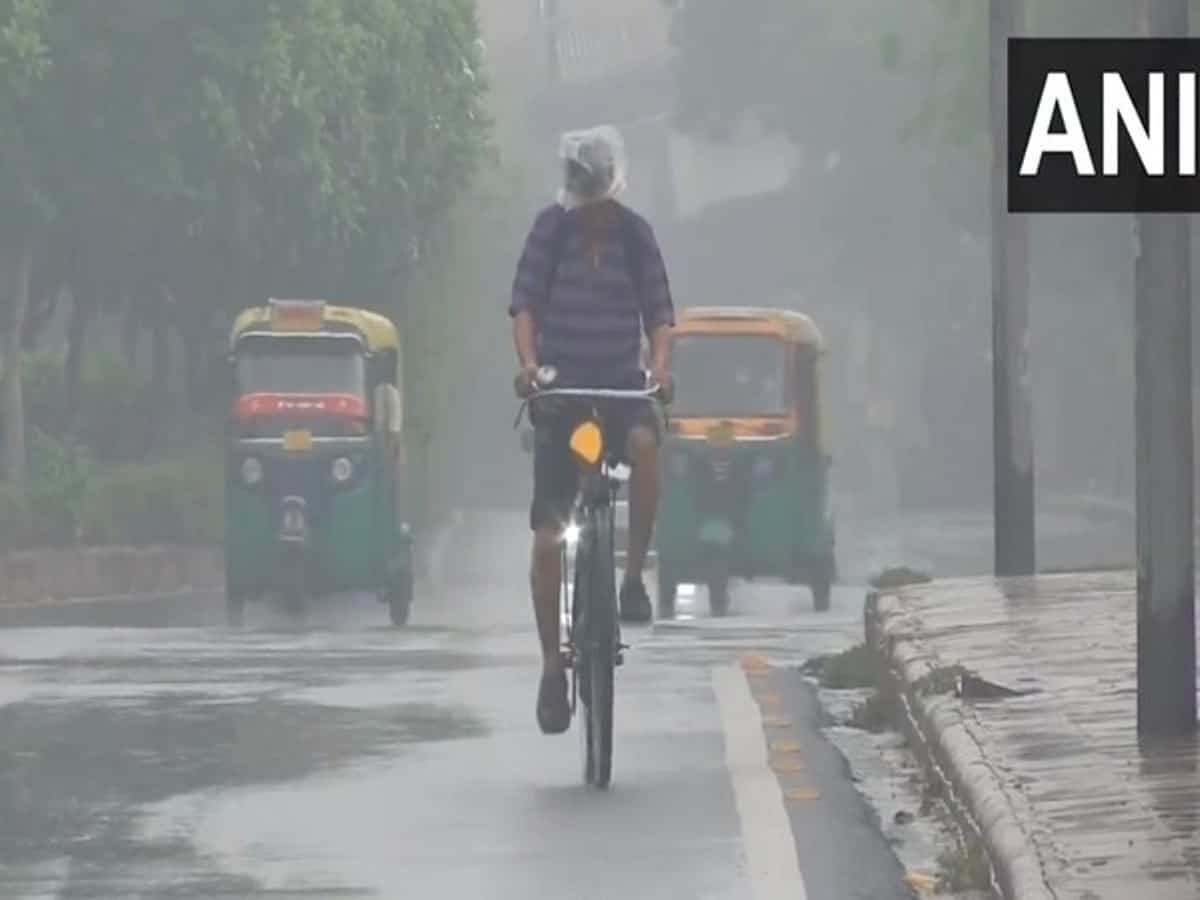
New Delhi: Several parts of Delhi received rains on Thursday bringing respite from heat but led to waterlogging in low lying areas and caused traffic snarls on arterial roads.
The weather office has predicted more rains on Friday.
The areas that witnessed rains on Thursday include Lajpat Nagar, Greater Kailash, Jangpura, parts of Lutyens’ Delhi, Rohtak Road, Anand Parbat, Zakhira, Pitampura, ITO, Lodhi Road and areas around India Gate among others.
Rains led to waterlogging in low-lying areas of the capital and also affected traffic movement in many areas, including Dhaula Kuan, NH-8, ITO, Vikas Marg, Ring Road, India Gate circle, Aurobindo Marg near INA, Anand Parbat, Rohtak Road, Zakhira, Kirari and Lajpat Nagar.
The traffic police also informed residents about rains and possible traffic congestions due to waterlogging, advising commuters to plan their journey accordingly.
“Traffic is affected on NH8 in both the carriageways from Dhaula Kuan towards Gurgaon and vice-versa due to waterlogging near GGR/PGR. Kindly avoid the stretch,” the Delhi Traffic police said in a tweet.
According to the India Meteorological Department (IMD), Safdarjung observatory, Delhi’s primary weather station, received 20.4 mm rains between 8.30 am and 5.30 pm on Thursday while Lodhi Road observatory received 15.1 mm rainfall in the same period.
At Pitampura, 11 mm rainfall was recorded between 8.30 am and 5.30 pm on Thursday while it was 4.5 mm at Pusa and 2.4 mm at Aayanagar in the same time period.
The weather office predicted more rains on Friday.
“There will be generally cloudy sky with light to moderate rain and thundershowers. Maximum and minimum temperature of Friday are likely to hover around 31 and 25 degrees Celsius respectively,” an IMD official said.
The city’s maximum temperature on Thursday settled at 31.2 degrees Celsius, three notches below the season’s average, the weather office said.
It added that the minimum temperature was recorded at 26.7 degrees Celsius, a notch below the average.
The relative humidity at 5.30 pm was 95 per cent, the weather office said.
The weather office had earlier said the monsoon trough is likely to “continue to shift gradually northwards” and it led to an increase in rainfall activity over north India from Wednesday.
The Safdarjung Observatory has recorded 232.8 mm of rainfall so far in July against a normal of 192.6 mm.
It has logged 257.3 mm of precipitation against a normal of 266.7 mm since June 1, when the monsoon season starts.

